Monthly Archives: October 2019
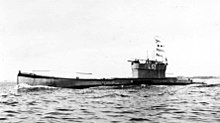 Over the years, ships that sailed the high seas, were faced with a number of perils, among them the biggest human danger there was…pirates. No area of the globe was particularly more dangerous than another, and no area was immune to attack, as was seen on October 19, 1927, when the Chinese steamer, SS Irene was on a voyage from Shanghai to Amoy with 258 passengers and crew. As she set out, she was taken over by pirates masquerading as passengers on that Wednesday. After boarding, the pirates quickly seized control of the ship and headed out to sea.
Over the years, ships that sailed the high seas, were faced with a number of perils, among them the biggest human danger there was…pirates. No area of the globe was particularly more dangerous than another, and no area was immune to attack, as was seen on October 19, 1927, when the Chinese steamer, SS Irene was on a voyage from Shanghai to Amoy with 258 passengers and crew. As she set out, she was taken over by pirates masquerading as passengers on that Wednesday. After boarding, the pirates quickly seized control of the ship and headed out to sea.
It was then that two L-class British submarines intercepted the vessel and demanded that they halt and surrender. The two submarines were based off Mendoza Island (now Shenggao Island) at the entrance of the bay. Upon their arrival, they had been ordered to split up. L4 went to patrol around the entrance of the bay and L5 was ordered to patrol within. It was at this point that they encountered the SS Irene. Pirates are a bull-headed group, and they aren’t afraid of very much. They are after all, outlaws, and that makes them a tough bunch. The pirates refused to surrender, and the submarines were ordered to fire. They fired two torpedoes into the ships hold. Even after being hit, the pirates continued to try to make it to shore, but they had been too badly damaged. Finally, they began to abandon ship. At this point, the ship stopped, but it was already beginning to sink. The British submarines then rescued the passengers and crew.
The Irene incident of 1927 was a significant event of the British anti-piracy operations in China during the first half of the 20th century. It was part of a British attempt to surprise the pirates of Bias Bay, about sixty miles from Hong Kong.  Royal Navy submarines were sent to stop the pirates, and the merchant ship SS Irene, of the China Merchants Steam Navigation Company, which had been taken over by the pirates on the night of October 19th was one if the first. The British were successful in thwarting the hijacking though they sank the ship. Sometimes, drastic measures must be taken in order to bring about the necessary changes. While we don’t hear about it as much, piracy still exists today. There may again come a time when drastic measures must be taken, and I know the authorities will do what has to be done.
Royal Navy submarines were sent to stop the pirates, and the merchant ship SS Irene, of the China Merchants Steam Navigation Company, which had been taken over by the pirates on the night of October 19th was one if the first. The British were successful in thwarting the hijacking though they sank the ship. Sometimes, drastic measures must be taken in order to bring about the necessary changes. While we don’t hear about it as much, piracy still exists today. There may again come a time when drastic measures must be taken, and I know the authorities will do what has to be done.

 No, I’m not talking of foods to eat when you are feeling depressed, although the Great Depression really did qualify as depressing. Nevertheless, as I was considering the days of the Great Depression, I wondered what foods the people had survived on, when money was scarce, and food was suddenly expensive…more so than these days, when you consider the lack of jobs and money. People were forced to re-evaluate their priorities and their food choices.
No, I’m not talking of foods to eat when you are feeling depressed, although the Great Depression really did qualify as depressing. Nevertheless, as I was considering the days of the Great Depression, I wondered what foods the people had survived on, when money was scarce, and food was suddenly expensive…more so than these days, when you consider the lack of jobs and money. People were forced to re-evaluate their priorities and their food choices.
It was at this point that foods like Bisquick, Good Humor ice cream bars, Kraft macaroni and cheese, Krispy Kreme doughnuts, Kool-Aid, Toll House chocolate chips, Ritz Crackers, and Spam appeared on the scene. They were inexpensive foods then, and they have never left us. To this day, some people call them “broke food.” In many ways, foods had to be more filling, more calorie laden, because you didn’t always get to eat as much as you wanted. That makes the calories important. Some foods became too pricey. Less expensive options on things became a must. Crisco was a less expensive option to butter, Oscar Meyer Wieners replaced more costly sausages, Maxwell House Sanka coffee was an option to whole bean coffees, Heinz Ketchup was used as the base for a simple tomato soup, Underwood Deviled Ham substituted fresh lunch meat, Carnation evaporated milk replaced fresh milk, Ground acorns became a substitute for coffee. People added chicory to extend the coffee supplies, while honey, molasses and corn sweeteners replaced sugar, because sugar was at a premium, and later on in World War II, it was rationed.
It wasn’t just the new foods that were strange, but rather what people made with some of them, that amazes me. Basically, foods changed from what we had known before, because fruits, vegetables, and meats weren’t as readily available. Things like meatless meatloaf and appleless apple pie appeared on the scene. Meatloaf became “anything” loaf…from meatless meatloaf made with everything from peanuts to raisins to liver loaf, families used their creativity and whatever was available to make this alternative to the weekly favorite. With a shortage of apples came the “mock apple pie” which substituted apples for crumbled crackers sprinkled with flavored syrup and cinnamon, all baked into a crust. The most famous of these recipes appeared on the back of the Ritz cracker box in 1934, the “Ritz mock apple pie” was an instant hit. Things like chipped beef on toast or waffles was also a staple, and one my mom, Collene Spencer picked up from her mom, Hattie Byer. Mom liked it so much that it was something we had from time to time. Basically, it used a little chipped beef and a lot of gravy. I can see how it would have been a staple in the Great Depression, because it was very filling. And of course, my personal favorite, and one I still love since my grandmother first made them for us, Potato Pancakes. Because of the wide availability and low cost of potatoes, Depression-era cooks used potatoes as substitutes in other dishes. Potato pancakes, made with grated potatoes cooked or fried in a pan, was a common dish at every meal. We loved them, and nobody made them like Grandma.
People foraged in their yards too. These days, many people drink Dandelion Tea or put Dandelion leaves in their salad. Of course, the dandelions we use today have to be carefully cultivated, because most of us try very hard to kill them when they spring up in our gardens. Weed killer would not make for “healthy” dandelions. Wild onions were also used, and were something I remember Mom telling us about. She loved them. Of course, people who knew about plants could forage for herbs that could be used for everything from seasoning to medicine. Most of us today don’t really know many of the herbs in the wild, although we might know them if we plant them from a seed.
Soups took on various new forms too. Mulligan Stew came about from those who were homeless, because it entailed putting in anything that was available. Some people actually went so far as to put lint in to make it more filling. “Tomato” soup even took on new forms, substituting Ketchup for tomato sauce. And they even managed to have dessert sometimes. Prune Pudding was founded during this time. Prunes were easy to store, 
 widely available, and much less expensive than other fruits, while providing needed nutrients to the Depression-era diet. The fruit is packed with fiber and supplies almost one-third of your daily needs for Vitamin K. And it already had sweetness, so there wasn’t much to do, but heat it. While some of the foods of the Great Depression era where designed to fill people up, some managed to be nutritious too. Either way, some of the foods developed back then are still with us today, and there are still a lot of us who have had some of the recipes that were developed in those days, by our grandparents.
widely available, and much less expensive than other fruits, while providing needed nutrients to the Depression-era diet. The fruit is packed with fiber and supplies almost one-third of your daily needs for Vitamin K. And it already had sweetness, so there wasn’t much to do, but heat it. While some of the foods of the Great Depression era where designed to fill people up, some managed to be nutritious too. Either way, some of the foods developed back then are still with us today, and there are still a lot of us who have had some of the recipes that were developed in those days, by our grandparents.
 For as long as I can remember, my Uncle Jim and Aunt Dixie have had a place on Squaw Creek Road on the western edge of Casper, Wyoming. Here they raised their kids, and had some chickens and such. Over the years they also ran a daycare, which took in mostly family members’ kids, giving the young parents in the family peace of mind. Of course, Uncle Jim worked outside of the daycare, but he made enough of an appearance, that the kids all knew and loved him. I can see that, because Uncle Jim is
For as long as I can remember, my Uncle Jim and Aunt Dixie have had a place on Squaw Creek Road on the western edge of Casper, Wyoming. Here they raised their kids, and had some chickens and such. Over the years they also ran a daycare, which took in mostly family members’ kids, giving the young parents in the family peace of mind. Of course, Uncle Jim worked outside of the daycare, but he made enough of an appearance, that the kids all knew and loved him. I can see that, because Uncle Jim is  like a big teddy bear. I don’t know of a single person who doesn’t like my gentle uncle. He is a very loveable guy.
like a big teddy bear. I don’t know of a single person who doesn’t like my gentle uncle. He is a very loveable guy.
I think the greatest lesson Uncle Jim ever taught his kids, and any other kids around him is to have values and to live up to those values. Always do the right thing, and you will never have to live with regret. I think one of the greatest testaments to the nature of a man is the amount of respect given to them by those around them. Uncle Jim is a man of deep core values, and that is very likely why everyone has such great respect for him. He always makes sure that he does the right things. His core beliefs wouldn’t let him do otherwise.

Among those values, and probably at the top of the list…family comes first. Whether it was his family, his parents and siblings families, or his in-laws families, family is everything. If your family has a need, you do your best to help fill it…no matter what it is, from a place to live, to fixing something that is broken. Sometimes the greatest need someone has is simply a need for words of wisdom or kindness. Uncle Jim has always been quick to offer those words too…not in a pushy way, but rather just helpful words, when asked. Uncle Jim was and is a man people can count on, and that says a lot about a man. Today is Uncle Jim’s birthday. Happy birthday Uncle Jim!! Have a great day!! We love you!!
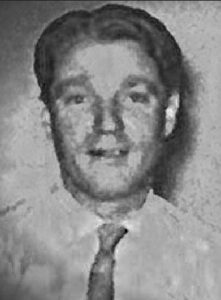 Most people have heard of, and seen, the James Bond movies. Of course, Bond is a fictional British agent, known as 007, and his character has been played by a number of actors over the years, but in reality, he is fictional. Renato Levi, who was also known as CHEESE, MR. ROSE, LAMBERT, EMILE, or ROBERTO, was a Jewish-Italian adventurer and double-agent for the British in World War II. Levi was instrumental in setting up a wireless transmitter in Cairo. The transmitter fed false information to the Axis powers over the course of the war. It was a great tool for the Allies. Unfortunately, Levi was captured and imprisoned shortly after he accomplished his mission. Levi’s “CHEESE” network helped to outflank Rommel at the battle of El Alamein in Egypt, as well as placing other, strategic misinformation that aided the Allies, including at Normandy.
Most people have heard of, and seen, the James Bond movies. Of course, Bond is a fictional British agent, known as 007, and his character has been played by a number of actors over the years, but in reality, he is fictional. Renato Levi, who was also known as CHEESE, MR. ROSE, LAMBERT, EMILE, or ROBERTO, was a Jewish-Italian adventurer and double-agent for the British in World War II. Levi was instrumental in setting up a wireless transmitter in Cairo. The transmitter fed false information to the Axis powers over the course of the war. It was a great tool for the Allies. Unfortunately, Levi was captured and imprisoned shortly after he accomplished his mission. Levi’s “CHEESE” network helped to outflank Rommel at the battle of El Alamein in Egypt, as well as placing other, strategic misinformation that aided the Allies, including at Normandy.
Levi almost always flew under the radar, especially in the British National Archives. Even in recent books about spies and counter-intelligence, the accomplishments of Renato Levi still receive barely a mention and the specifics about his part in all this is often confused. In all reality, Levi’s files have only recently been released, and even then Levi’s, aliases “Cheese,” “Lambert,” or “Mr. Rose” seem to be identified openly only once in his classified dossier. Indeed, in his national documents, there is evidence of redaction everywhere, including Levi’s primary codename “CHEESE” has been carefully handwritten in tiny, blocky letters over white-out, in order to re-establish a place in history.
The CHEESE network, out of Cairo, took a significant hit to its credibility when Levi was arrested and convicted in late 1941 or early 1942. The British came up with an imaginary agent. “Paul Nicossof” was able to regain and retain the trust of the Germans, which is one of the most interesting features of this story. Thanks to the expert manipulations of the British Intelligence operatives controlling the wireless, the CHEESE network was considered credible again by June of 1942…just in time for “A” Force to start planting counter-intelligence prior to the commencement of Operation Bertram at El Alamein in Egypt during October of 1942.
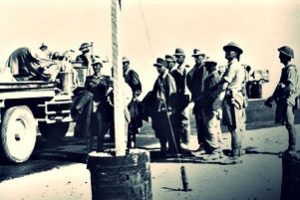 Most interesting to note are the ways that the intelligence operatives used payment schedules…or, rather, the German’s lack of payment to “Paul Nicossof”…to establish credibility about the fictitious informant’s information. “Nicossof” was portrayed as moody and inconsistent, because efforts to pay him were always unsuccessful. His “handlers” credited Germany’s inability to pay “Nicossof” as the way they were able to extend his character beyond the “impasse” that would normally constitute a non-military informant. “Nicossof” could portray himself as the “man who brought Rommel to Egypt,” which would get him paid for his troubles at last, as well as the glory and medals that went with it…all to a fictitious agent!!
Most interesting to note are the ways that the intelligence operatives used payment schedules…or, rather, the German’s lack of payment to “Paul Nicossof”…to establish credibility about the fictitious informant’s information. “Nicossof” was portrayed as moody and inconsistent, because efforts to pay him were always unsuccessful. His “handlers” credited Germany’s inability to pay “Nicossof” as the way they were able to extend his character beyond the “impasse” that would normally constitute a non-military informant. “Nicossof” could portray himself as the “man who brought Rommel to Egypt,” which would get him paid for his troubles at last, as well as the glory and medals that went with it…all to a fictitious agent!!
Perhaps because of the British Intelligence’s efforts to make “Nicossof” convincing and because Levi was so good under duress in prison, the Germans never really lost faith in the CHEESE operative network. They were starved for information, and CHEESE held the only promise for any intelligence about the Middle East. The Germans blamed the Italians for the confinement of their only key agent in the Middle East, Renato Levi. For whatever the reason, the Germans trusted Levi, but he never broke or compromised his duty to the Allied forces.
After looking at these newly declassified documents some people have tried to press Levi into the service of a “Hero Spy” figure, but in reality, Levi was a far more complicated figure and these whitewashed narratives don’t really tell the whole story of Levi’s complexity, nor the complexity of his work. Levi’s story also reveals much about the inner workings of the German Abwehr and the nature of the Italian Intelligence operations. Levi’s British handlers speculated that it was unlikely that the German and Italian Intelligence bureaus had a great deal of communication between them. The Germans were really overly satisfied with Levi’s original purpose of 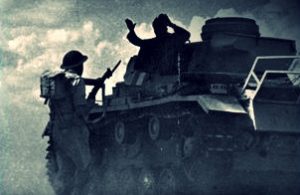 establishing a wireless transmitter network, to their detriment in the end.
establishing a wireless transmitter network, to their detriment in the end.
It seems that Levi’s ultimate fate is unknown. It is true that the CHEESE network was in full swing throughout the war, and many have credited “CHEESE” with hoodwinking the Germans in a big way on many occasions. Perhaps Levi was again affiliated with CHEESE after his release, or maybe not. Regardless, Renato Levi, who had always loved travel, intrigue, and a really good lie, did a remarkable service to the Allied forces by instituting one of the best and most productive counter-intelligence operations of World War II, and he kept it all safe.
 On the first trip I made to Forsyth, Montana with my husband, Bob Schulenberg’s family, I was introduced to his family there…among them, Eddie Hein, Bob’s uncle…his dad’s half-brother. That first trip was followed by yearly trips for many years to come. We loved going up for visits, and we were always made to feel welcome. Eddie was a quiet man…soft spoken, but with a big heart. You always felt accepted by him. Eddie had a great big smile, and a laugh that lit up his face, and he liked to laugh. I will miss his smile, and his big hearted kindness. There was never the formality of calling Eddie and Pearl, uncle and aunt, because they weren’t that much older than many of their nieces and nephews were. Even though we didn’t see them as much lately as we used too, it was always good knowing that he was there. Now, suddenly, Eddie is gone. He passed away yesterday, even though it seemed that his health was improving after his stroke of a few years ago. We will all miss him very much.
On the first trip I made to Forsyth, Montana with my husband, Bob Schulenberg’s family, I was introduced to his family there…among them, Eddie Hein, Bob’s uncle…his dad’s half-brother. That first trip was followed by yearly trips for many years to come. We loved going up for visits, and we were always made to feel welcome. Eddie was a quiet man…soft spoken, but with a big heart. You always felt accepted by him. Eddie had a great big smile, and a laugh that lit up his face, and he liked to laugh. I will miss his smile, and his big hearted kindness. There was never the formality of calling Eddie and Pearl, uncle and aunt, because they weren’t that much older than many of their nieces and nephews were. Even though we didn’t see them as much lately as we used too, it was always good knowing that he was there. Now, suddenly, Eddie is gone. He passed away yesterday, even though it seemed that his health was improving after his stroke of a few years ago. We will all miss him very much.
Bob and I went to Forsyth, two years ago, after his stroke, and I am so glad that we made that trip. It is a trip I will cherish now. Eddie and Pearl, his wife, were both is good spirits, and the trip was so much fun. His mobility was good, even after the stroke, and he seemed just like his old self. I was glad. Pearl just beamed. She was so happy to have him beside her…something I understand after my own husband’s heart attack. You learn to set aside things that don’t matter so much, and live for the day you are in. That’s what Eddie and Pearl were doing too. There were times that Pearl wanted to declutter…we all need to do that from time to time, but 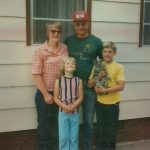 Eddie wanted her to let that go, and just be together. I think I understand where he was coming from, as I’m sure Pearl does too. Stuff can be cleaned out anytime, but time cannot be relived. Memories are always with us, but we have to live them to have them first, to make the memories. Eddie and Pearl lived them.
Eddie wanted her to let that go, and just be together. I think I understand where he was coming from, as I’m sure Pearl does too. Stuff can be cleaned out anytime, but time cannot be relived. Memories are always with us, but we have to live them to have them first, to make the memories. Eddie and Pearl lived them.
They were married on July 15, 1967, and their marriage was blessed with two children, Larry on May 17, 1969; and Kim on June 27, 1971. Life was good. Eddie worked for many years at Peabody Coal in Colstrip, Montana; while Pearl worked at the IGA in Forsyth, until they both retired. This past July they celebrated their 52 wedding anniversary. Eddie and Pearl had a house in Forsyth, Montana, along the Yellowstone River. They raised vegetables, and Pearl canned they every year. Eddie had a garage where he could tinker, and he loved caring for the garden. He was also a capable carpenter. He turned their mobile home into a beautiful house, with a fireplace made from area stone. It was beautiful. Eddie was always willing to help other people with their own projects, including when his brother, Walt Schulenberg, my father-in-law was building his house outside of Casper, Wyoming. As the years passed, Eddie and Pearl became grandparents. They loved their time with those kids, and I’m sure the kids loved the time with them.
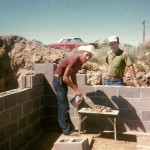
It’s hard to believe that Eddie is gone now. There will always be an empty place that belonged to him. I am thankful for the memories of our trips to Forsyth, and the wonderful visits to Eddie and Pearl’s house. I can picture it now, sitting around their table, drinking coffee, and listening to the stories of our lives. It didn’t matter what we talked about…their lives or our lives, we were reconnecting, and that always felt good. I will really miss those times. It saddens me to have the aunts and uncles leaving us. They contribute so much to our lives, and that rich heritage is slipping away with each one who goes home to Heaven. Still, Eddie, like so many others who have gone on before us, is in our future now, not our past. We will see him again. Rest in peace Eddie. We love and miss you already.
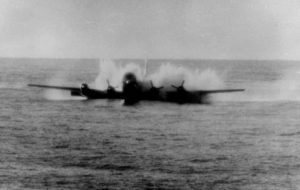 Very few people these days haven’t heard of Captain Chesley B. “Sulley” Sullenberger III and co-pilot Jeff Skiles who made their now famous landing on the Hudson River in New York City after a bird strike left them powerless. We all know that everyone “miraculously” survived that crash landing. It was an undeniable miracle, but it was not the first time such a thing had happened. On October 16, 1956, Pan Am Flight 6, a Boeing 377 Stratocruiser on a nighttime flight from Honolulu to San Francisco, developed engine trouble in one and then two of its four engines. Pan Am Flight 6 was about halfway across the Pacific Ocean at the time and the malfunctioning engine propeller sent the airplane into a descent. I can only imagine the thoughts racing through the minds of the pilots, given the fact that they were not going to find a highway or a field on which to land safely. There was only ocean. This was not the first time a plane had to ditch in the ocean, but I doubt that was any comfort to the men who were flying the plane, since the other ditching events had fatalities.
Very few people these days haven’t heard of Captain Chesley B. “Sulley” Sullenberger III and co-pilot Jeff Skiles who made their now famous landing on the Hudson River in New York City after a bird strike left them powerless. We all know that everyone “miraculously” survived that crash landing. It was an undeniable miracle, but it was not the first time such a thing had happened. On October 16, 1956, Pan Am Flight 6, a Boeing 377 Stratocruiser on a nighttime flight from Honolulu to San Francisco, developed engine trouble in one and then two of its four engines. Pan Am Flight 6 was about halfway across the Pacific Ocean at the time and the malfunctioning engine propeller sent the airplane into a descent. I can only imagine the thoughts racing through the minds of the pilots, given the fact that they were not going to find a highway or a field on which to land safely. There was only ocean. This was not the first time a plane had to ditch in the ocean, but I doubt that was any comfort to the men who were flying the plane, since the other ditching events had fatalities.
Pan Am World Airways first started flying in 1927, delivering mail between Florida and Cuba. The carrier was based out of New York City for nearly 30 years, until it went out of business in 1991. The airline left a legacy of firsts. “It was first across the Atlantic, first with flights across the Pacific and the first to offer around-the-world service,” said Kelly Cusack, the curator of the Pan Am Museum Foundation. Most airlines celebrate a lot of their firsts, but there is one first that no airline wants to celebrate, or have on their list of firsts at all…a crash. Nevertheless, on October 16, 1956, a crash was exactly what was going to happen. This crash took place 53 years before “Sulley’s” famous water landing into the Hudson River. “This is a particularly memorable and a proud part of our legacy because of two words: happy ending,” said Jeff Kriendler, who was Pan Am’s vice president for corporate communications in the 1980s and has written several anthologies about the airline. Airlines have ditched in the ocean before, but this was the first to do so with no fatalities. Like “Sulley’s” famous flight, ditching in the ocean without fatalities…was unheard of. Unlike “Sulley’s” landing, which was caught on camera, a nighttime flight in the middle of the ocean in 1956 was not likely to be caught on camera.
The flight started out smoothly, but then developed engine trouble in one, and then two of its four engines. Pan 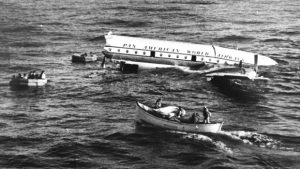 Am Flight 6 was about halfway across the Pacific Ocean at the time and the malfunctioning engine propeller sent the airplane into a descent. The decision to land the plane in the sea with 24 passengers and seven crew members aboard was not made until all other options had been considered. Captain Richard Ogg, the pilot, wrote an account of the episode a year later, saying that he had to weigh many factors. Should he jettison fuel and try to land on the water immediately or fly until daylight provided better visibility? One thing was clear, the bad propeller was causing the plane to burn fuel too fast. He would not make it to San Francisco or Honolulu. Apparently, it was no coincidence that the ship was nearby. In the early days of long flights over water, Coast Guard ships were positioned in the Pacific and the Atlantic Oceans, offering weather information to flight crews and relaying radio messages, according to Doak Walker, a Coast Guard historian who participated in the rescue of Flight 6. In preparation, the cutters were placed near what was expected to be the point of no return. That is the area where a plane would have burned too much fuel to turn back in case of an emergency.
Am Flight 6 was about halfway across the Pacific Ocean at the time and the malfunctioning engine propeller sent the airplane into a descent. The decision to land the plane in the sea with 24 passengers and seven crew members aboard was not made until all other options had been considered. Captain Richard Ogg, the pilot, wrote an account of the episode a year later, saying that he had to weigh many factors. Should he jettison fuel and try to land on the water immediately or fly until daylight provided better visibility? One thing was clear, the bad propeller was causing the plane to burn fuel too fast. He would not make it to San Francisco or Honolulu. Apparently, it was no coincidence that the ship was nearby. In the early days of long flights over water, Coast Guard ships were positioned in the Pacific and the Atlantic Oceans, offering weather information to flight crews and relaying radio messages, according to Doak Walker, a Coast Guard historian who participated in the rescue of Flight 6. In preparation, the cutters were placed near what was expected to be the point of no return. That is the area where a plane would have burned too much fuel to turn back in case of an emergency.
Ogg opted to fly an eight-mile circuit above the Pontchartrain until morning while planning for the water landing. Remembering that during another Pan Am Stratocruiser ditching, the tail had broken off, Ogg had the passengers in the back of the plane move forward and asked those seated by the engine to move as well. “We will try to stay aloft until daylight,” Ogg radioed to the Pontchartrain. When the passengers learned the flight would circle and not attempt to land in the dark, “it gave them a lot of confidence,” said Frank Garcia, 91, the flight engineer and a guest of honor at the Pan Am event. Passengers were also comforted knowing “someone was out there waiting to give them as much aid as they can,” Garcia said. Standing watch on the cutter just after 8 a.m., Walker, 83, recalled that “the seas were extremely calm and the weather was good and we were hoping there wouldn’t be much of a problem.”
Just as Ogg had expected, the tail broke off as soon as the plane hit the sea. Then the nose of the airliner went under the water. “I felt as if somebody had grabbed the seat of my pants and was pulling,” Garcia said. “I saw the water. I was more frightened if the windows broke, then the water would come in.” From the cockpit, 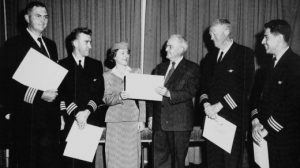 all Garcia saw was water. “I can’t tell you how many seconds, it was less than a minute, and I saw the water receding,” Garcia said, as the front of plane surfaced. On the Pontchartrain many thought they had just witnessed a disaster, Walker said. “It was so sad,” he said. “We knew nobody could survive that.” Rescue boats sped toward the plane, while other Coast Guardsmen filmed the event. Captured moments included life rafts bobbing by the aircraft’s fuselage, transferring survivors to rescue boats, the sinking plane, and the lifting of twin toddlers, Maureen and Elizabeth Gordon, from a lifeboat into waiting seamen’s arms. And, everyone was saved. It was a miracle at sea.
all Garcia saw was water. “I can’t tell you how many seconds, it was less than a minute, and I saw the water receding,” Garcia said, as the front of plane surfaced. On the Pontchartrain many thought they had just witnessed a disaster, Walker said. “It was so sad,” he said. “We knew nobody could survive that.” Rescue boats sped toward the plane, while other Coast Guardsmen filmed the event. Captured moments included life rafts bobbing by the aircraft’s fuselage, transferring survivors to rescue boats, the sinking plane, and the lifting of twin toddlers, Maureen and Elizabeth Gordon, from a lifeboat into waiting seamen’s arms. And, everyone was saved. It was a miracle at sea.
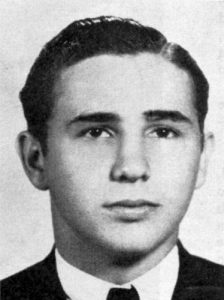 Sometimes, it’s a close call that saves the life of a person, because a difference of inches could have meant the difference between life and death. That was the case for young Corporal Adolf Hitler when he was temporarily blinded on October 14, 1918, by a gas shell that was close enough to temporarily blind him, but unfortunately for the rest of the world, not close enough to kill him. The British shell was part of an attack at Ypres Salient in Belgium, and in the aftermath, Hitler found himself evacuated to a German military hospital at Pasewalk, in Pomerania. Of course, Hitler considered this a great good fortune, with the exception of the temporary blindness. I find myself wishing that the shell had been closer, because the difference of inches could have changed the world, and especially the victims of the Holocaust.
Sometimes, it’s a close call that saves the life of a person, because a difference of inches could have meant the difference between life and death. That was the case for young Corporal Adolf Hitler when he was temporarily blinded on October 14, 1918, by a gas shell that was close enough to temporarily blind him, but unfortunately for the rest of the world, not close enough to kill him. The British shell was part of an attack at Ypres Salient in Belgium, and in the aftermath, Hitler found himself evacuated to a German military hospital at Pasewalk, in Pomerania. Of course, Hitler considered this a great good fortune, with the exception of the temporary blindness. I find myself wishing that the shell had been closer, because the difference of inches could have changed the world, and especially the victims of the Holocaust.
Like many young men of the period, Hitler was drafted for Austrian military service, but when he reported, he was turned down due to lack of fitness. In the summer of 1914, Hitler had moved to Munich. When World War I began, he asked for and received special permission to enlist as a German soldier. It all seemed like a noble thing to do. Hitler was a member of the 16th Bavarian Reserve Infantry Regiment. He traveled to France in October 1914. There, he saw heavy action during the First Battle of Ypres, earning the Iron Cross that December for dragging a wounded comrade to safety. These things rather surprise me, give Hitler’s reputation for thinking only of himself.
Over the course of the next two years, Hitler took part in some of the fiercest struggles of the war, including 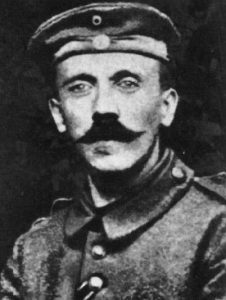 the Battle of Neuve Chapelle, the Second Battle of Ypres and the Battle of the Somme. He was wounded in the leg by a shell blast on October 7, 1916, near Bapaume, France. Following his hospital stay. Hitler was sent to recover near Berlin, after which he returned to his old unit by February 1917. According to Hans Mend, a comrade of Hitler, he was given to rants on the dismal state of morale and dedication to the cause on the home front in Germany. According to Mend, “He sat in the corner of our mess holding his head between his hands in deep contemplation. Suddenly he would leap up, and running about excitedly, say that in spite of our big guns victory would be denied us, for the invisible foes of the German people were a greater danger than the biggest cannon of the enemy.” It would seem that Hitler’s crazed mind was beginning to present itself. As I look at a picture of Hitler as a young man, I wonder what happened to him that changed him so much. Yung Hitler didn’t look like the crazed, evil dictator the world knew
the Battle of Neuve Chapelle, the Second Battle of Ypres and the Battle of the Somme. He was wounded in the leg by a shell blast on October 7, 1916, near Bapaume, France. Following his hospital stay. Hitler was sent to recover near Berlin, after which he returned to his old unit by February 1917. According to Hans Mend, a comrade of Hitler, he was given to rants on the dismal state of morale and dedication to the cause on the home front in Germany. According to Mend, “He sat in the corner of our mess holding his head between his hands in deep contemplation. Suddenly he would leap up, and running about excitedly, say that in spite of our big guns victory would be denied us, for the invisible foes of the German people were a greater danger than the biggest cannon of the enemy.” It would seem that Hitler’s crazed mind was beginning to present itself. As I look at a picture of Hitler as a young man, I wonder what happened to him that changed him so much. Yung Hitler didn’t look like the crazed, evil dictator the world knew
Hitler continued to earn citations for bravery over the next year, including an Iron Cross 1st Class for “personal bravery and general merit” in August 1918 for single-handedly capturing a group of French soldiers hiding in a shell hole during the final German offensive on the Western Front. Then, on October 14, 1918, Hitler received the injury that put an end to his service in World War I. He learned of the German surrender while recovering at Pasewalk. Hitler was furious and frustrated by the news. He said, “I staggered and stumbled back to my 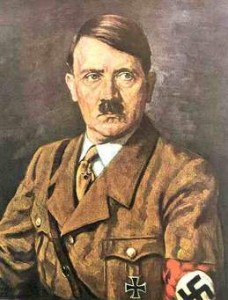 ward and buried my aching head between the blankets and pillow.” Hitler felt he and his fellow soldiers had been betrayed by the German people. I’m amazed that he did not put them in the camps too. In 1941, Hitler as Führer would reveal the degree to which his career and its terrible legacy had been shaped by the World War I, writing that “I brought back home with me my experiences at the front; out of them I built my National Socialist community.”
ward and buried my aching head between the blankets and pillow.” Hitler felt he and his fellow soldiers had been betrayed by the German people. I’m amazed that he did not put them in the camps too. In 1941, Hitler as Führer would reveal the degree to which his career and its terrible legacy had been shaped by the World War I, writing that “I brought back home with me my experiences at the front; out of them I built my National Socialist community.”
When I think of what might have been, but for a difference of inches, I find it very ironic. If that shell had hit just a few inches closer, perhaps Hitler would have died a hero in his nation, before he could become the epitome of evil…to the world, and to many of his own people. I suppose World War I and II, as well as the other wars, would have still happened, but maybe, quite likely, the Holocaust would not have happened. Just a few inches. If only.

 One year ago today, my husband, Bob Schulenberg had a heart attack. It was one of the worst days of my life, and one of the best days of my life. I will never forget the scene after a man knocked on my car window in the parking lot at Walmart, asking me if “I know this man?” I immediately jumped out of my car and walked around the back of it, to be greeted with the worst scene of my life. Lying there on the pavement, bleeding from his head, was my precious husband. His eyes were open, but they were blank, and his skin was turning purple. After thinking I was going to lose him right there, I shook my head and said, “No!!” Getting down on the ground, I said, “Come on Bob…come on!!” Willing him to fight.
One year ago today, my husband, Bob Schulenberg had a heart attack. It was one of the worst days of my life, and one of the best days of my life. I will never forget the scene after a man knocked on my car window in the parking lot at Walmart, asking me if “I know this man?” I immediately jumped out of my car and walked around the back of it, to be greeted with the worst scene of my life. Lying there on the pavement, bleeding from his head, was my precious husband. His eyes were open, but they were blank, and his skin was turning purple. After thinking I was going to lose him right there, I shook my head and said, “No!!” Getting down on the ground, I said, “Come on Bob…come on!!” Willing him to fight.
It was then that a Wyoming Medical Center, Progressive Care Unit, cardiac care nurse showed up. Ginger Sims took charge. She started checking vitals, and immediately saw that he wasn’t breathing. She turned him over and began CPR. It had been maybe a minute since his heart attack. Suddenly, I could see that there was a swarm of people there to help Bob…each one orchestrated by God to be there at that very moment, some of them who never shopped at Walmart. Sean Pesicka-Taggart saw Bob fall, and came to him immediately. It was Sean who first alerted Ginger to the problem, when she saw him trying to help Bob. After beginning CPR, and tiring of doing compressions, Laura Lance, Sean’s girlfriend, and a transport worker at WMC, told Ginger that she knew CPR and could spell her. Ginger wasn’t sure, but she needed a break. Laura took over, and Ginger could see that she did know CPR. Sean had called 911, and got help coming. Then, as she was leaving the Walmart parking lot, another nurse, Valya Boycheva, who was also a friend of Ginger’s saw someone doing CPR, and turned her car around to come back and took turns doing CPR. Ginger heard me talking to Bob, and said if I knew him, I could do rescue breathing for him. I did, with instruction. It’s amazing how quickly your mind checks out when you are in this kind of situation. I had no idea what to do, even though I should have. The next thing I knew, the fire department was there. They hooked Bob up to the Lucas Machine, which does compression automatically. Bob was loaded into the ambulance, and I went along with him. Our fireman friend, Jerod Levin brought our car to the hospital for me.
As people were leaving Walmart, a number of them, saw all this and began praying…Chelsea and Zack Kessler; Chelsea called her parents and my friends, Page and Donna LePage; a member of my church, Lori Desanti; my boss, Jim Stengel; who called Donna LePage to pray, at which point she knew who she had already been praying for. The Cath Lab at WMC was staffed by people who knew Bob…he worked on their cars…Sam Cann and John Cooke, working with Dr Pickrell and Dr Hiser, who put a stent in Bob’s heart. From heart attack, to stent and functioning heart, took just 2 hours. This was a miracle of God, and we were very blessed with more time together.
That was one year ago today. This day, October 14, 2019, Bob’s 1st Heart Re-Birthday, is a very different kind of day. This day we will go to workout at the Nerd Center at WMC, where Bob has been in maintenance since his cardiac rehab was finished. We did a lot of walking before that horrible day last year, and they say that is why Bob’s heart has done so well. I agree, but God healed his heart. There in no other explanation for me.

One might expect it to take a long time for Bob to heal, but it didn’t. He is completely back to normal now, and our lives continue on as usual…except that we truly know what we have. There is nothing that will make you appreciate your spouse more than almost losing them. It makes you realize just how blessed you are. We want to thank each and every one of the people involved in this miracle. With God’s help and your willing hearts, you all beat the Widowmaker, and we are forever grateful. Today is Bob’s 1st Heart Re-Birthday. It is an amazing day…the day that the Lord has made. We will rejoice today and be very glad in it. Happy 1st Heart Re-Birthday Bob!! We all love you!!

 My nephew, Ryan Hadlock is very much a family man. He and his wife, Chelsea have a son, Ethan, and a daughter, Aurora. Ethan is in midget football right now, and Ryan never misses a game. Ryan also attends all the kid’s school performances and activities. Recently, he took Aurora on a Daddy/Daughter Date. He has also attended the Donuts with Dad event, and all their other activities too. Ryan is a great husband to his wife, Chelsea, and they are very happy together. They just celebrated their 11th anniversary in April, and they are still going strong.
My nephew, Ryan Hadlock is very much a family man. He and his wife, Chelsea have a son, Ethan, and a daughter, Aurora. Ethan is in midget football right now, and Ryan never misses a game. Ryan also attends all the kid’s school performances and activities. Recently, he took Aurora on a Daddy/Daughter Date. He has also attended the Donuts with Dad event, and all their other activities too. Ryan is a great husband to his wife, Chelsea, and they are very happy together. They just celebrated their 11th anniversary in April, and they are still going strong.
Ryan is a helpful guy. Not only with his own family, but with his parents, sisters, and other family members as well. As his parents, Allyn and Chris Hadlock have been working on the new home they are building, Ryan has been there to help them whenever he could. Ryan helped his parents insulate the upstairs in the new house, and he helps his dad in the garage a lot. He helps his brother-in-law, Jason Sawdon anytime he needs it. When his youngest sister, Kellie Hadlock bought her first house, Ryan was quick to help her move, paint, and fix things in her house. He winterized the sprinklers at his house, his parents’, and Kellie’s house too.
He loves his nieces. Being an uncle was something he was really looking forward to and he hasn’t disappointed in that department. Nieces, Adelaide Sawdon and Mackenzie Moore love him so much. He is so fun, and dotes on the little girls. He loves to tease and laugh, but he also has a calm demeanor that adds great value to his whole family. My sister, Allyn tells me just how much fun it has been to see him as a dad and an uncle. They are two roles that he has really excelled in.
He has a calm demeanor that adds great value to their family, but never mistake his “calm demeanor” for a 
 lack of a sense of humor, because you will definitely be caught off guard. Ryan is a great son and brother too. He has helped his sister Kellie a lot in her new house. Ryan and brother-in-law, Jason Sawdon helped her move. Ryan loaned Kellie his lawn mower, gave her a weed eater, and made sure her bed was put together. I’d say Kellie has been very blessed in the brother/brother-in-law department. The whole family has been very blessed with Ryan. Today is Ryan’s birthday. Happy birthday Ryan!! Have a great day!! We love you!!
lack of a sense of humor, because you will definitely be caught off guard. Ryan is a great son and brother too. He has helped his sister Kellie a lot in her new house. Ryan and brother-in-law, Jason Sawdon helped her move. Ryan loaned Kellie his lawn mower, gave her a weed eater, and made sure her bed was put together. I’d say Kellie has been very blessed in the brother/brother-in-law department. The whole family has been very blessed with Ryan. Today is Ryan’s birthday. Happy birthday Ryan!! Have a great day!! We love you!!
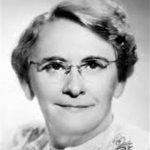
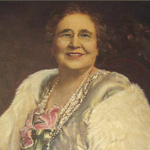 Unfortunately, not every life story is a perfect one. There are among us, who embrace evil, greed, and selfishness, as well as the need to promote themselves as far more important than they are, or ever should be allowed to be. Georgia Tann was purported to be the face of modern adoption practices. She supposedly changed the view of orphan children, from unworthy of better circumstances to simply victims of circumstance who could go on to greatness, if given the chance. She had the backing of many of the prominent members of Memphis society, and officials including Shelby County Juvenile Court Judge Camille Kelley. In reality, Tann operated a horrific human trafficking operation under the name of the Tennessee Children’s Home Society (not to be confused with the legally operated Tennessee Children’s Home) from 1924 to 1950. The non-profit corporation might have been legitimate when first chartered in 1897. Beulah George Tann was born in July 18, 1891, so she was too young to bring her evil into the society when it first began, and didn’t work there when the charter was renewed in 1913, but it was under her leadership that it became an illegal adoption agency.
Unfortunately, not every life story is a perfect one. There are among us, who embrace evil, greed, and selfishness, as well as the need to promote themselves as far more important than they are, or ever should be allowed to be. Georgia Tann was purported to be the face of modern adoption practices. She supposedly changed the view of orphan children, from unworthy of better circumstances to simply victims of circumstance who could go on to greatness, if given the chance. She had the backing of many of the prominent members of Memphis society, and officials including Shelby County Juvenile Court Judge Camille Kelley. In reality, Tann operated a horrific human trafficking operation under the name of the Tennessee Children’s Home Society (not to be confused with the legally operated Tennessee Children’s Home) from 1924 to 1950. The non-profit corporation might have been legitimate when first chartered in 1897. Beulah George Tann was born in July 18, 1891, so she was too young to bring her evil into the society when it first began, and didn’t work there when the charter was renewed in 1913, but it was under her leadership that it became an illegal adoption agency.
Tann preyed upon people who had lost their jobs due to the depression, as well as single mothers, telling them that she could help them by taking the children temporarily, until they could get back on their feet. When the parents tried to reclaim their children, they found out that they had been adopted. The parents tried to fight Tann in court, but the courts rules in favor of the Tennessee Children’s Home Society…but she didn’t stop there. She had her people take children off the streets, and even their own front porches. The children were listed as abused, neglected, or abandoned. Their names and birthdates were changed to make tracking difficult…records were routinely destroyed. She also had parents sign forms they did not understand when their babies were born, often while mothers were still under medication, saying that this would let the county pay for the birth. Parents were then told the babies had died. When their older children were taken away, they found out that they had also signed away the rights to their them too. There were many corrupt officials involved in this. The corruption ran deep, and everyone covered up for everyone else in the ring.
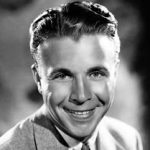


The problem the children faced after being removed from the protection of their parents, who love them; is that the people who take them do not value the heart, mind, and bodies of these children. The children kept there were routinely malnourished, beaten, imprisoned, and abused…in every sense of the word. They were not allowed to go to school, and they were taken to viewing parties so potential…rich parents could take the ones they liked. Tann took children from poor people and gave them to “high-types” of people…for a price, of course. The cost of the adoptions was high and there were additional fees is the child had to be transported to another state. Only the rich could afford them. Tann pocketed the lion’s share of the fees received, and she lived well, while the children often survived on cornmeal mush. It is estimated that over 500 children died in the group homes run by Georgia Tann. Some were buried in mass graves. The final resting place of many others is unknown.
Tann’s rich parents were victims too. They had unknowingly adopted children who shouldn’t have been up for adoption. If they found out what she had done, Tann blackmailed them into silence. Actress, Joan Crawford’s twin daughters Cathy and Cynthia were adopted through the agency. Actors, June Allyson and husband Dick Powell also used the Memphis-based home for adopting a child. Professional wrestler Ric Flair was stolen from his birth mother and placed for adoption. Auto racer Gene Tapia had a son stolen by the agency. A 1950 state investigation found that Tann had arranged for thousands of adoptions under questionable means. State investigators discovered that the Society was a front for a broad black market adoption ring, headed by Tann. They also found record irregularities and secret bank accounts. In some cases, Tann skimmed as much as 80 to 90% of the adoption fees when children were placed out of state. Officials found that Judge Camille Kelley had 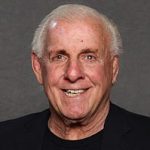
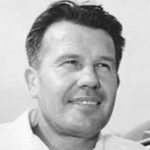 railroaded through hundreds of adoptions without following state laws. Kelley received payments from Tann for her assistance. Tann died in the fall of 1950, before the case could go to trial. Kelley announced that she would retire after 20 years on the bench. Kelley was not prosecuted for her role in the scandal and died in 1955. Over the years that Tann headed up the Tennessee Children’s Home Society, she amassed at least 5,000 victims. The true number will most likely never be known, and in reality, continues to grow with each generation of children born, who will never know their true heritage.
railroaded through hundreds of adoptions without following state laws. Kelley received payments from Tann for her assistance. Tann died in the fall of 1950, before the case could go to trial. Kelley announced that she would retire after 20 years on the bench. Kelley was not prosecuted for her role in the scandal and died in 1955. Over the years that Tann headed up the Tennessee Children’s Home Society, she amassed at least 5,000 victims. The true number will most likely never be known, and in reality, continues to grow with each generation of children born, who will never know their true heritage.

